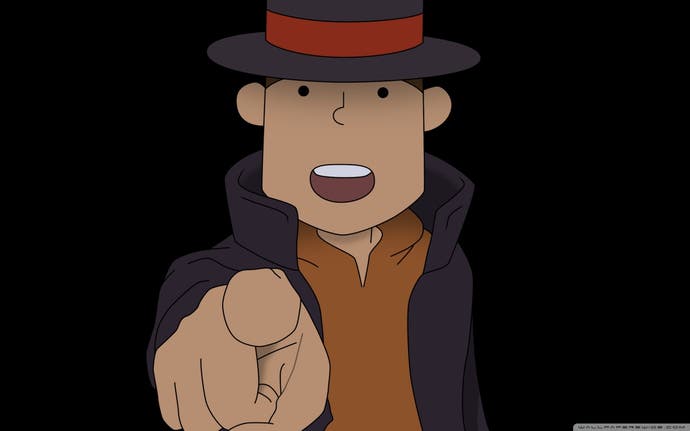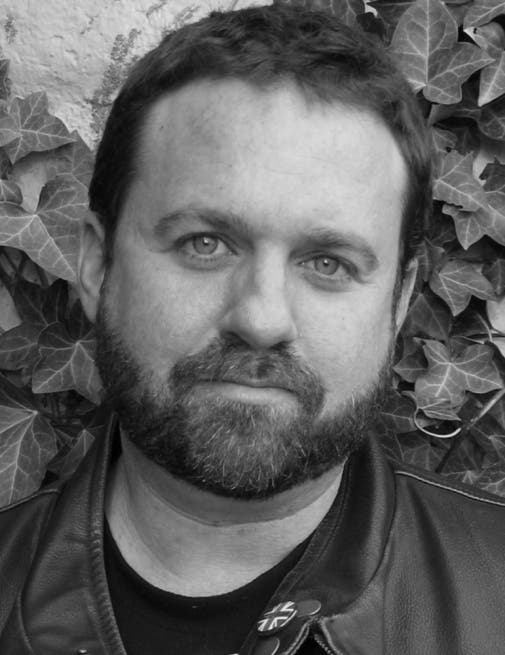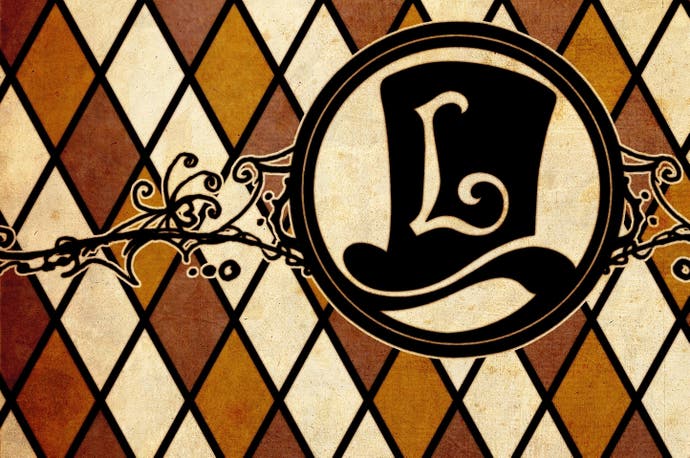The story behind Nintendo's detective
How Level-5 got Luke and Layton together.
Professor Layton sips tea from fine china and has a keen interest in archaeology. He enjoys fencing, displays a natural talent for puzzle solving, keeps a studious yet approachable demeanour (Layton became a professor at the age of 27) and wears a top hat that outlines a nobly Victorian silhouette. He is, in summary, a blend of kindly clichés drawn from literature, Hollywood and echoes of bygone eras. He's a hopeful tourist's idea of an Englishman. And yet, over the course of the six video games in which he stars, Professor Layton has revealed himself to be a great deal more than the sum of his well-worn, if well-meaning, clichés.
Partly it's in the backstory, revealed in drips across the intertwining storylines of the games, in which the Professor and his 12-year-old public schoolboy sidekick Luke attempt to unpick a number of tangled mysteries. Here we learn that Layton's life was shaped by tragedy. Born Theodore Bronev, Layton and his elder brother were orphaned at a young age. His adoptive parents could only take on one of the two siblings. Before meeting the children they picked 'Hershel', Layton's older brother, on the adoption form. Hershel, wanting to look out for his younger brother, switched their names and gave Layton his place.
Later in life, the professor's partner Claire, whom he first met when the pair studied together at University, died in an explosion. It was Claire who gave Layton his top hat, an accessory he has worn to honour her memory ever since. It's a sad and involved backstory for a series built upon the kind of frivolous brainteasers usually found in the back pages of a newspaper, Moreover, it's an involved storyline for a character that was never meant to exist.
"When I saw the illustrations I temporarily named them Professor Layton and Luke. The names seemed to fit perfectly and before I knew it they'd stuck."

Akihiro Hino, president of the Japanese development studio Level-5, had the idea for a series of puzzle games based on the Atama no Taisou series of puzzle books, which he grew to love when he was a child. The books, written by Professor Akira Tago from Chiba University show none of the quaint literary homage found in the Professor Layton games. Indeed, Atama no Taisou translates to the sternly functional 'Mental Exercises'. "We thought we could turn these books into a pleasant, casual game by just adding a few game-like elements," says Hino.
In 2006 Level-5 began work on a prototype, working directly with Professor Tago to translate his riddles into video game form. But during this time the studio was refused the Atama no Taisou name due to copyright infringement. Despite the setback, the demo was at an advanced enough stage to provide Level-5 with a route forward. "We'd created a bonus mode in which the player would solve puzzles as part of a story," Hino says. "So we developed this mode and created a story based around the puzzles you'd find in Tago's books."
It was a small leap of logic to cast the protagonist of a riddle-based game as a detective. Unusually, Hino decided to create a pair of characters for the player to inhabit. "We wanted to offer two intelligent characters who could bounce ideas off each other," says Hino. Drawing inspiration from Sir Arthur Conan Doyle's pair of proto-detectives, Sherlock Holmes and Doctor Watson, Hino asked one of his artists to draw an English gentleman and a younger character. "When I saw the illustrations I temporarily named them Professor Layton and Luke," he says. "The names seemed to fit perfectly and before I knew it they'd stuck. The characters stayed just as I had conceived them at the beginning."
Hino began by writing an outline of the game's basic plot. It was a story of a wealthy widow, Lady Dahlia, whose late husband's fortune was tied up in an unsolved riddle. Unable to access the fortune, she wrote to Professor Layton inviting him to her Gallic hometown, St. Mystere, to try his hand (and wits) at the problem. "I begin each game with just the world view and game concept," explains Hino. "Then I write until finally I end up with maybe around 50-100 pages that can be used as a working script. This is then broken down into the game's dialogue and text."

Speeded by this pragmatic approach, Professor Layton and the Curious Village's development was brisk. All but 30 of the puzzles featured in the game were drawn from Tago's previous book - the rest he wrote specifically for the project. "To this day we design the puzzles via a process we call 'Puzzle Camp', explains Hino. "The puzzle team, headed by Professor Tago, and the game development team spend several days' together away designing puzzles. We are all extremely passionate about the puzzles and often our discussions become pretty heated."
Tago and the Level-5 team kept the balance of riddles in mind right from the start of the process to ensure there was no bias towards questions based on maths, geometry or plain tricks. "Math-based puzzles are especially tricky as it is easy to see them as something right out of say a calculus class," says Hino. "We use descriptive text and illustrations to make these puzzles look and feel interesting - even at a glance, they rely heavily on a flash of inspiration."
Level-5's timing with the first Professor Layton game might seem fortuitous, but it was in fact calculated. Nintendo's Dr Kawashima's Brain Training (another project for Nintendo's handheld conceived from the pages of a popular Japanese non-fiction book) had found enormous success. The game, which went on to sell close to 18 million copies around the world, broadened the Nintendo DS handheld's appeal to demographics outside of the typical video game player. "Even people who didn't usually play games bought a Nintendo DS just to train their brains," says Hino. "We did a lot of a research on Dr Kawashima's Brain Training to anticipate what these new players wanted to play next."
Hino knew that the brainteasers at the heart of Professor Layton and the Curious Village would appeal to the Brain Training audience. But he was concerned that the supplemental game elements would prove off-putting. "We worked hard to identify game components that are generally considered integral to games but are inessential and which could be set aside," he explains. "For example, in the Professor Layton series, you can progress in the game without solving a difficult puzzle and choose to solve it later on instead. This is an unusual approach in game design, but it was quite deliberate."
With its playful art style, whimsical dialogue and lilting soundtrack, selecting the right voice actor to play the role of Layton was crucial to complete the aesthetic. "I don't just concern myself with finding a voice that matches the image I have of the character when casting," explains Hino. "I also place heavy emphasis on how much the actor can perform as the character. If I can clearly imagine how the character would look while they speak, I can usually quickly find the appropriate casting."
In 2007 Christopher Robin Miller, a 38-year old television actor who had only appeared in one video game, 2001's Twisted Metal Small Brawl, received a call from his agent inviting him to a mass audition for a new Nintendo game. "It was one of many auditions I do each week," he says. When he arrived he was given five lines to read. One read: 'Luke, you must always remember - a true gentleman always...' with an instruction for the actor to fill in the blank.
"I could immediately tell who the character was," says Miller. "He's kind of a throwback. He's not an anti-hero. He's not modern. He has a deep sense of propriety: right is right. I like that about him. He reminded me of mentors I had in my youth." While Miller felt an immediate affinity with the character and "definitely" wanted the role, he was also cautious to not raise his hopes. "We actors can be a bit neurotic," he says, "so while I knew I could embody the Professor, I had to consciously override my neuroses. Otherwise I'd drive my agent nuts calling to ask whether they'd heard back from Nintendo." A few days later Miller's agent called him. Nintendo had booked him a flight from Utah, where he lives, to Seattle, Washington to begin recording. "I knew that if they'd booked a thousand-mile flight they probably weren't going to back out."
""I don't plan on letting Layton end here. While Hershel Layton's personal story is now finished, we intend to continue on with the challenge of adding more unique Professor Layton titles to the overall series."
Hino had few doubts that the game would be a success. "As soon as the game entered testing I knew that we had made something entirely new, and I knew it would be well received," he says. Unlike Dr Kawashima's Brain Training, which secured only 70,000 pre-orders with retailers before its launch, Professor Layton was an immediate success. By August 2013, the six games in the series enjoy combined sales of 15 million units, three million copies more than Tago's series of puzzle books sold since their debut in 1966.
The recently released Professor Layton and the Azran Legacy brought the second of Layton's two trilogies to a close, completing the character's arc. Level-5 stated that this will be the final game to star Hershel as protagonist. But Hino is determined it's not the end for the series. "I don't plan on letting Layton end here," he says. "While Hershel Layton's personal story is now finished, we intend to continue on with the challenge of adding more unique Professor Layton titles to the overall series."
For Miller, who is yet to complete any of the games in the series ("I only play a smart person") with Layton's uncertain future it's a sad farewell to a character that he has, in his words, fallen in love with. "I will miss the reveal of a new story of adventure each year," he says. "Not to mention working with the producers and developers, and seeing the adoration of the fans of this delightful series. People care about the characters and their relationships. I hope that the creators will change their minds and decide to keep going... but right now I have to let go."
For Hino, through these games he has honoured his childhood love of Tago's puzzle books. His favourite puzzle featured in the series remains one that he first experienced in the early 1970s, as a young child. "Remember the river crossing puzzle, Wolves and Chicks, from Professor Layton and the Curious Village?" he says. "I'm fondest of this puzzle. It has such a deep intricacy. I still want to solve it over and over."










